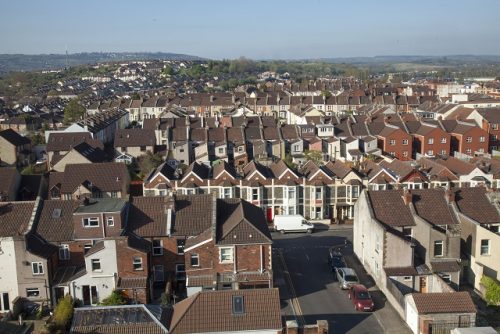Bristol needs to build more than 60,000 new homes in next two decades

Bristol needs to build more than 60,800 new homes in less than two decades to meet the needs of the city’s 2040 population, research has revealed.
With 432,711 more adults expected to be living in Bristol by 2040 – including 71,997 people aged 66 and over, 179,684 first-time buyers (25-44-year-olds), and 50,081 of student age (18-22) – the analysis highlights the pressing need to accommodate the city’s demographic growth.
The research also identifies high levels of under-occupancy, with a reported 20,395 people aged 66 and over residing in homes larger than necessary (two or more bedrooms unoccupied). If this trend continues, more than 26,294 65+ households are expected to be under-occupied by 2040.
Home to two major universities, Bristol’s student-age population is projected to grow by 3% to nearly 50,081 people in 2040. Furthermore, its social housing stock is estimated to have plummeted by 3,636 despite over 20,000 people being listed on their local authority’s housing register in 2023.
Craig Pettit, planning director at Marrons in Bristol, said: “With projections indicating the need for a staggering 60,000 new homes by 2040, Bristol leads the way in the South West in terms of the sheer number of properties necessary to meet the population’s requirements over the coming years.
“In a bid to cope with the demand, the city council is currently asking neighbouring authorities to assist with its unmet need, which is currently reported as 10,4000 homes – although the actual figure is believed to be much higher.
“The current reactive planning system only perpetuates the problem, leaving us constantly playing catch-up. To truly address the crisis, we must adopt a proactive approach, one that accurately assesses future needs and understands Bristol’s constraints. This means delving into the intricacies of our planning landscape, including the impact of the Green Belt and tight local authority boundaries, as well as using demographic data to drive forward development that future proofs commerce and job opportunities.
“Housing plays a huge role in this and building a range of properties to suit many different needs is not only a priority but a necessity. It creates more choice, aids first-time buyers onto the property ladder, gives expanding families additional space; helps the ageing population downsize and live in homes more suitable for their needs, and adds to the supply of affordable housing.
“Moreover, we need a paradigm shift in the rhetoric surrounding development. For too long, any form of development has been met with scepticism and opposition. It is time to embrace a forward-thinking mindset, recognising that responsible development is essential for Bristol’s growth and sustainability.
“As we witness other nations successfully tackle similar challenges, it is imperative England adopts a bold and innovative approach to planning. By doing so, we can lay the groundwork for a brighter future, one where housing is not a crisis but a fundamental aspect of thriving communities.”
In contrast to the remaining 33 local authorities within the South West, Bristol will have the highest minimum housing need by 2040.
Plymouth is forecast to see the greatest surge in its student-age population (22%), while South Gloucestershire is expected to see the largest uptick in its first-time buyer demographic (16%). Swindon is anticipated to witness the most substantial increase in those aged 66 and over, with a projected rise of 50% by 2040.
Utilising the latest Office for National Statistics Census data (2021) and 2018-based population projections, Marrons has painted a clear picture of England’s housing needs in 2040. Supplementing this is data from local authority housing registers, affordable housing stock records and extrapolated housing requirement figures using the government’s standard method.








